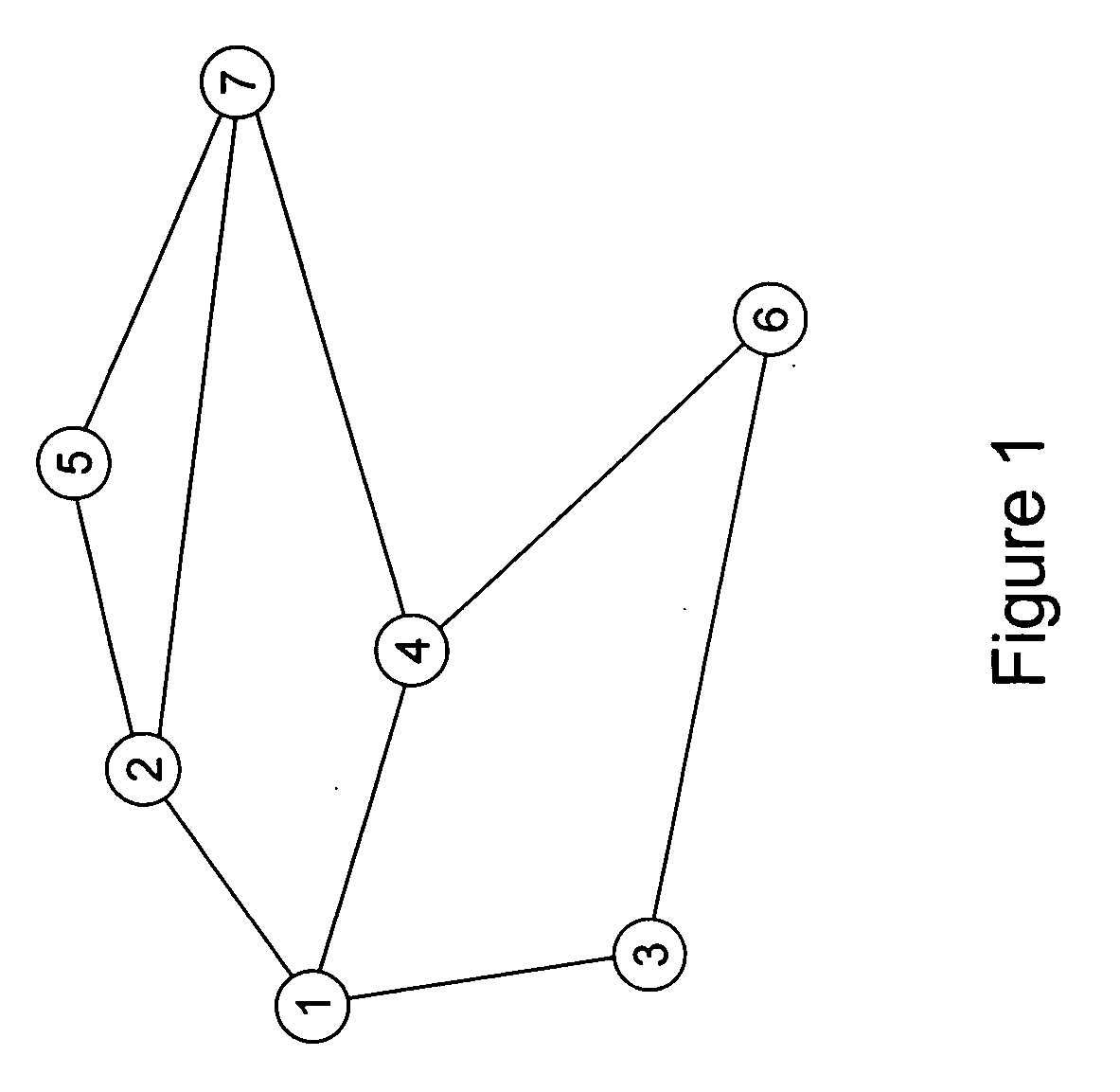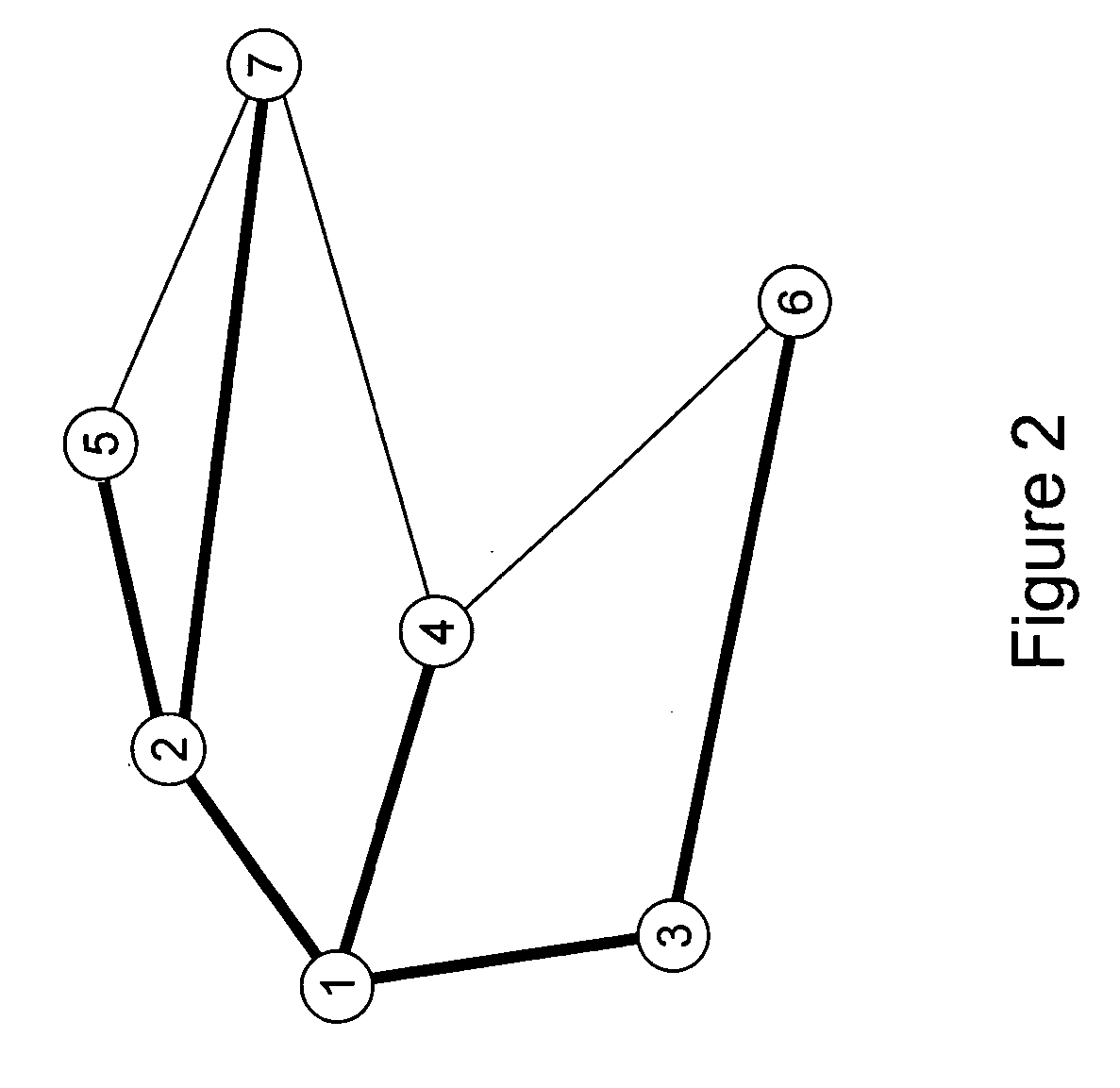Efficient probabilistic duplicate packet detector in computer networks
a computer network and probabilistic detection technology, applied in data switching networks, frequency-division multiplexes, instruments, etc., to achieve the effect of reducing the probability of error, arbitrarily accurate, and enhancing the usefulness and utilization of rdma capability
- Summary
- Abstract
- Description
- Claims
- Application Information
AI Technical Summary
Benefits of technology
Problems solved by technology
Method used
Image
Examples
case 1
[0051] k′=0
[0052] In this case, wherein all received packets were received an even number of times, C=0, hence C cannot be equal to q. In this case, such errors are detected with probability 1.
case 2a
[0053] m[k] is even.
[0054] In this case, the last packet (with hash value h[k]) does not contribute to C. Thus, C is the sum of k′ independently chosen random r-bit values. Therefore C takes a uniformly distributed random value and thus C equals q with probability 2−r.
P2a(C=q)=2−r (6)
case 2b
[0055] m[k] is odd.
[0056] In this case, h[k] does contribute to C. Let w[1], . . . w[k″] be the indices j at which m[j] is even (that is, the complement of v such that k′+k″=k). Now we have two subcases to consider (Subcase 2b1 and Subcase 2b2):
[0057] Subcase 2b1: k″>0.
[0058] In this case:
C=h[v[l]]+h[v[2]]+ . . . +h[v[k′]]
C=h[v[l]]+h[v[2]]+ . . . +h[v[k′−1]]+{q+h[l]+h[2]+ . . . +h[k′−1]}
C=q+h[w[1]]+h[w[2]]+ . . . +h[w[k″]] (7)
Thus C is the sum of a constant plus a set of independent random values, and hence C equals q with probability 2−r.
[0059] Subcase 2b2: k″=0.
[0060] In this case all packets arrived with odd multiplicity, hence each packet must have arrived exactly once, and hence C=q and there are no duplicates.
[0061] It is of importance to note that the size (in terms of number of bits) of the checksum variable r can be set in accordance with the probability desired.
[0062] The present method provides the following advantages over deterministic approaches:
[0063] 1. It ...
PUM
 Login to View More
Login to View More Abstract
Description
Claims
Application Information
 Login to View More
Login to View More - R&D
- Intellectual Property
- Life Sciences
- Materials
- Tech Scout
- Unparalleled Data Quality
- Higher Quality Content
- 60% Fewer Hallucinations
Browse by: Latest US Patents, China's latest patents, Technical Efficacy Thesaurus, Application Domain, Technology Topic, Popular Technical Reports.
© 2025 PatSnap. All rights reserved.Legal|Privacy policy|Modern Slavery Act Transparency Statement|Sitemap|About US| Contact US: help@patsnap.com



